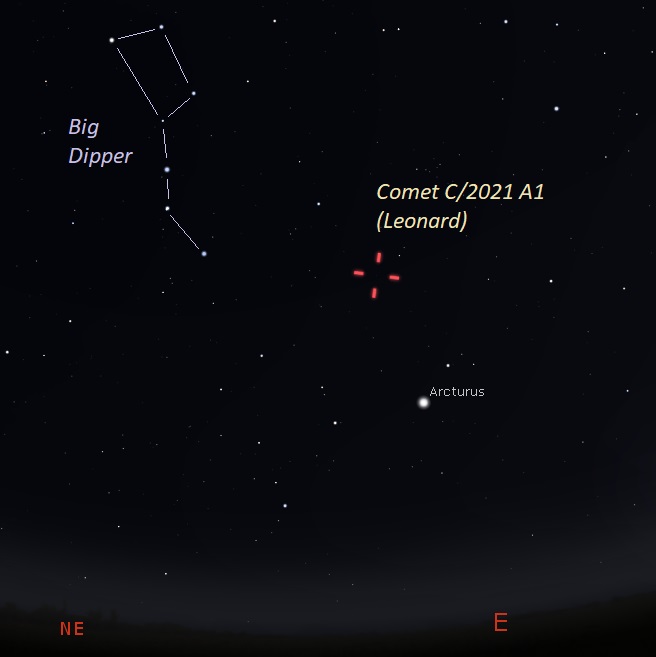Comet Leonard still might become 2021's brightest (earthsky.org)
Posted by Eddie Irizarry
November 3, 2021
Comet Leonard is brightening
Exciting news! A much-anticipated comet is brightening and still might become 2021’s brightest comet. Astronomer Greg Leonard discovered the comet that now bears his name – C/2021 A1 (Leonard) – on January 3, 2021, at the Mount Lemmon Observatory in Arizona. Astronomers reported then that discovery images showed a tail for the comet, suggesting we might see a nice tail as Comet Leonard draws closer to the Earth and sun. The comet is now between the orbits of Mars and Earth, heading inward. Comets are typically brightest around the time they’re closest to the sun. And Comet Leonard will reach perihelion, its closest point to the sun, around January 3, 2022.
And what about the comet’s closest approach to Earth? NASA/JPL estimates that Comet Leonard’s closest approach to Earth will be on December 12, 2021, at around 13:54 UTC. It’ll pass Earth at the extremely safe distance of 21,687,279 miles (34,902,292 km).
Its orbit also suggests that the comet will then pass relatively close (about 2,632,000 miles) to planet Venus on December 18, 2021.
Estimates indicate it might reach a visual magnitude between 5 and 2.6 (the lower the brighter), and although at its brightest the comet will be close to the horizon, we still might get very good views using binoculars during the days before closest approach to Earth, in early December 2021. Visibility to the eye alone may still be a possibility.
***

Location of Comet C/2021 A1 (Leonard) on December 1, 2021. This chart is as seen from U.S., facing east about 90 minutes before sunrise. The Big Dipper asterism in the constellation Ursa Major the Great Bear will provide a good reference for observers to locate the comet. Binoculars should provide a nice view. Illustration by Eddie Irizarry using Stellarium.
***
more (incl. several charts): https://earthsky.org/astronomy-essentials/comet-leonard-might-become-2021s-brightest-2022
